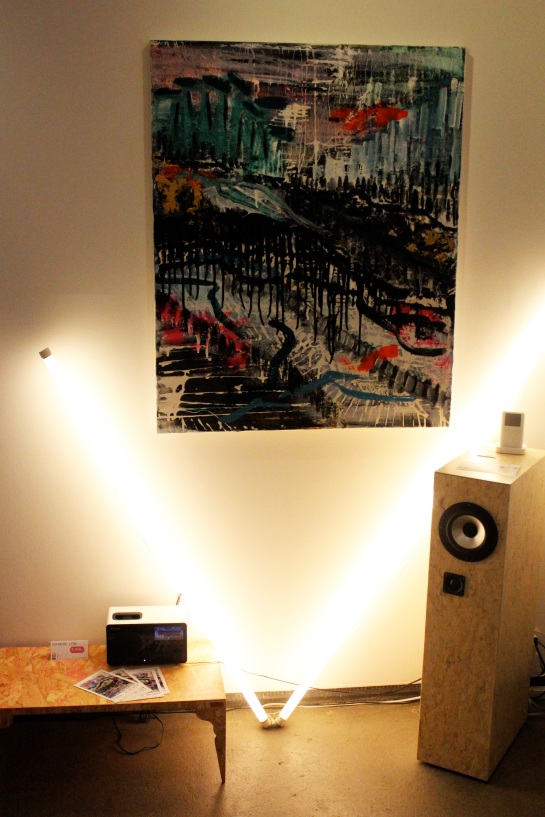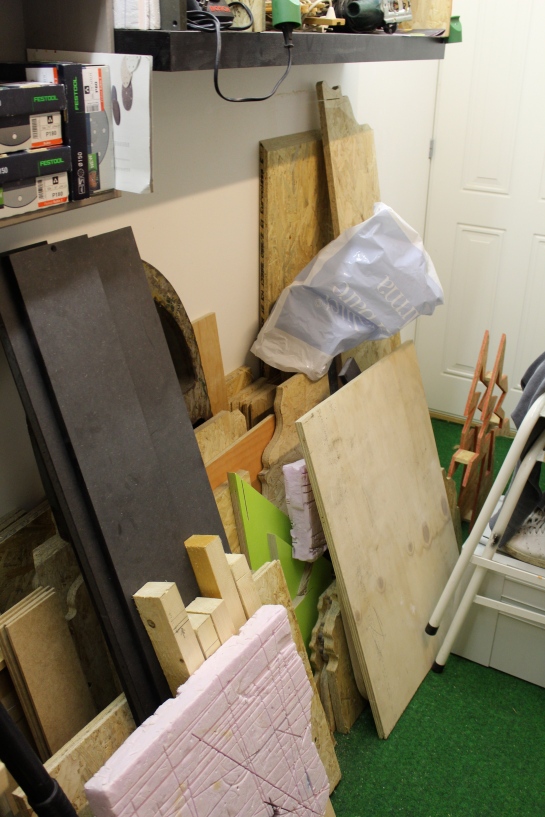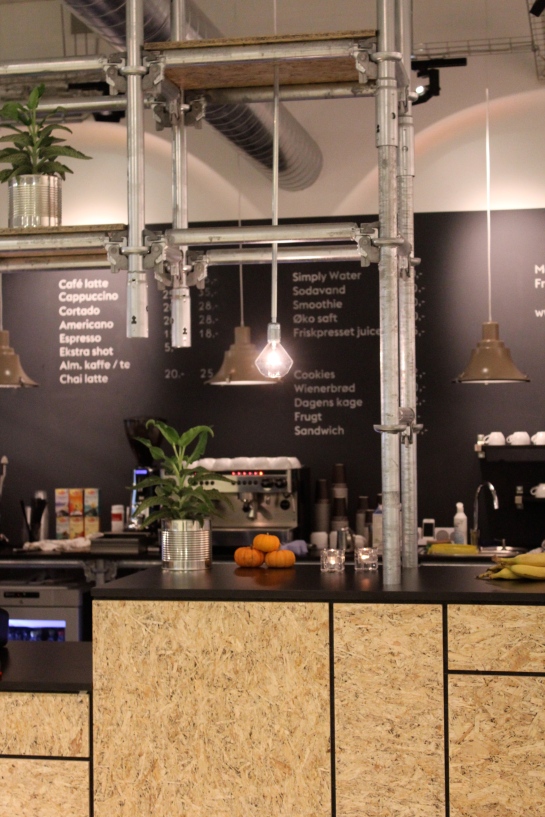In the Studio with Designer David Ritter
After seeing all of the pieces at Copenhagen’s recent Design Trade Show, a couple of designers’ work really stood out in my mind. I was very lucky to have the chance to sit down with interior + furniture designer David Ritterin his studio/gallery/office in Nørrebro this past week. David works primarily with a material he created himself, using OSB and colored spackle. In our time together, he taught me about his design process and theory, and I was very impressed with the way he spoke about his work. I am thrilled to welcome him to the blog in today’s interview! Enjoy!
Did you study to become a designer?
I first studied at a graphic design school in Hamburg, Germany, but wanted to do something more tangible where I could work with my hands. I then studied interior architecture at MAINZ in Germany.
How long have you been designing furniture, and have you had any other professions?
I started designing furniture after graduating from MAINZ three years ago. Before that, I had worked for a carpenter in Germany for 10 years. I enjoyed the job because I was learning by doing. It was not just abut theory, but about skills and craftsmanship. I could see that what I wanted to make was possible.
How did the OSB material that you created come about?
I started making OSB prototypes while I was still in school. I saw the material and thought that it was geological, which interested me. I picked it because it is like garbage from the wood industry, and people would appreciate that it is more ecological than plastic.
As I experimented with the combination of OSB and spackle, I learned to love it because it is a new product…a new material. It has a sense of warmth and is natural that lifts you. I feel that it hasn’t been done before and is not boring! Each piece is unique.
What inspires you?
I spend a lot of time in Greece and enjoy the water, greenery, and the bright sun. The colors that I create, I find in Greece. They are my inspiration and also tie into my ecological standpoint.
How long does a typical piece take? Do you have any assistance?
For pre-made designs, I have a local Nørrebro CNC studio, Kuubo.dk, route the basic table shapes for me in order to save time and money. I would like to be able to make every piece by hand, but it just takes too much time. However, I do cut custom pieces by hand, and I do all of the finishes by hand as well.
The spackle finish is a process of layering up spackle, sanding, and lacquering until the surface is very smooth. Due to drying time, each piece takes about 2 weeks to make. All of the materials are water based, ecological, and environmentally friendly.
You said that the studio you work with is nearby, is it important to you to work with local companies and materials?
It is very important to me that my pieces are locally sourced. My products should be honest and not mass produced. They are authentic and handmade in Copenhagen.
Danish design is world-renowned. Was it difficult to break out into the Copenhagen design scene, especially coming from Germany?
Danish design is all about the classic pieces, like Arne Jacobsen, and most Danes have the classic furniture in their home. But this means that most homes in Copenhagen look the same, and are not very colorful.
I think the fact that my pieces are handmade and authentic persuades them a bit to choose my designs. I also incorporate the customer when they are ordering a piece. They can come in to the studio and meet me, I will show them some wood samples, and they can choose any color of spackle they wish.
Your studio is well designed and suits your furniture well. Was that intentional?
I redesigned this basement space on my own, and before I worked out it, it was really falling apart. The sanded and lacquered concrete floor helps the wood texture of my pieces to stand out. I’ve also exposed part of the wall to reveal the construction that I put in.
This space is multifunctional and serves as my office, gallery, and I have a small workshop space in the back to do tests and experiments with materials. Currently, I am also using it as a gallery space for other artists to showcase their work!
Where can your pieces be found outside of the studio?
I collaborated with an architect who was interested in my material, and we used it for a cafe called Cafe Bording at the Copenhagen School of Design and Technology in Nørrebro. A black spackled OSB was used for the bar and bar tables, and I will be adding green spackle tables soon!
A shop in Germany sells my pieces, I will be showcasing in Berlin soon, and I am working on making my work available in Switzerland. My designs were also featured in Bo Bedre magazine and at the Copenhagen Design Trade Show.
What do you have planned for the future of DesignRitter? Any dreams?
Within a year I plan to open a flagship store for my work that is larger and provides ready-to-buy pieces for customers. I have also been enjoying working with architects that are interested in the design trade. One day it would even be great to have my material readily available for people to purchase and make their own projects!
Thank you so much to David for sitting down and talking with me about his work! He has designed and made all of the pieces you see in our photos, even the lamps and speakers! You can find designritter pieces on his website and also like his Facebook page to keep up with all of David’s rad creations.
I am very impressed with not only the aesthetics, but the theory behind David’s work, and am looking forward to seeing more of it at an upcoming gallery showing in Copenhagen. I will be sure to share that as well! Thank you so much for reading!











Pingback: New Year, New Blogging Goals |